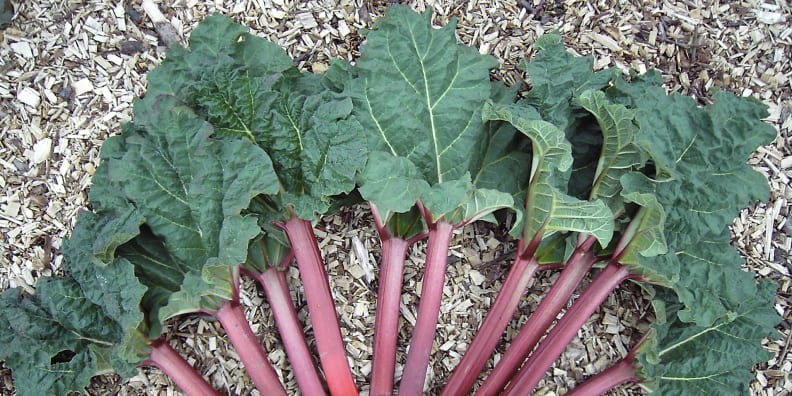10 vegetables that can kill you if they’re not prepared properly
We spill the beans on common yet dangerous ingredients
Products are chosen independently by our editors. Purchases made through our links may earn us a commission.
What if we told you your vegetarian diet—the one designed to protect your health and your family's health—could kill?!
Meh. That'd be a little dramatic. But look, there are a few ways to accidentally harm yourself or your dinner guests by preparing plants the wrong way, and a few of them aren't obvious if you've never been taught. All cooks, especially new ones, should read up on the hidden dangers of seemingly harmless ingredients, and so... here we go.
1. Green, sprouted potatoes
The humble potato, an integral part of the world's food supply, is definitely not toxic. But a potato abandoned and forgotten in your pantry will eventually turn green in places, or even sprout. That's when you know the poison solanine is now present.
Throw away (or plant!) green or sprouted potatoes. Cooking with them will result in gastrointestinal illness at least, and eating enough can kill.
2. Yuca (cassava)
Cassava root, otherwise known as Yuca, is a staple food for over a half billion people and one of the most drought-resistant, pest-resistant sources of carbohydrates in the tropics. And why is it so pest-resistant, you ask? That would be all the cyanide.
Cassava, especially bitter cassava, contains cyanide and must be processed before consumption. Even soaking the product for a few hours will make a difference. Otherwise, unprocessed bitter cassava can kill if consumed in sufficient quantities.
3. Rhubarb leaves

Rhubarb is a sour, red, celery-like stalk most often used in desserts like the ever-popular strawberry rhubarb pie. Rhubarb stalks are a great ingredient, but avoid the leaves: they're high in oxalic acid, which causes kidney failure. Just 25 grams of oxalic acid would kill, but you'd need to eat 11 pounds of rhubarb leaves to get there.
4. Asparagus berries
You'll never see these in a grocery store but apart from the safe stems, the asparagus plant also produces red, poisonous berries. So if you ever find yourself on an asparagus farm or something, don't eat the berries—even a handful will make you vomit.
5. Tomato vines & leaves
Technically tomatoes aren't vegetables, but we're still not putting them in fruit salads. And technically tomatoes aren't toxic either, but their leaves and stems may be slightly poisonous. In fact, tomatoes were widely feared in medieval times.
These days we rarely see tomatoes plated with anything other than the red fruit, but if you're served tomatoes "on the vine," don't eat the vine. Tomatine found in the stems and leaves are said to cause headaches and dizziness.
6. Raw lima beans
Lima beans contain a toxin called limarin, which is only neutralized by cooking the beans for 15 minutes. Don't be tempted to throw raw lima beans on salads, and don't slow-cook raw beans without boiling first. Limarin is fatal at high doses, but even a couple raw lima beans can cause gastrointestinal distress. Canned is fine.
7. Raw kidney beans
Raw kidney beans contain phytohaemagglutinin, a toxic lectin, and must be boiled for 10 minutes before use in any recipe, including slow cooking. In fact, slow cooking raw kidney beans that haven't been boiled multiplies the toxicity.
Raw kidney beans have killed rats in lab tests. In fact, just like gluten, avoidance diets targeting lectins like phytohaemagglutinin are starting to gain popularity.
8. Underripe tomatillos
Each tomatillo grows on the vine shrouded by a papery "lantern," which begins to dry and peel off on its own once the tomatillo is ripe. There's some debate on whether or not the tomatillo inside is toxic before the lantern peels, but the fruit is sour at this stage anyway, and probably not worth the risk. All other parts of the plant—including the lantern, leaves, and stem—are poisonous, so wash your tomatillos well.
9. Mystery mushrooms
Grocery store 'shrooms are harmless, of course. But with the popularity of wild mushroom foraging on the rise, it's important to remember the average forest ain't all morels and chanterelles. Some mushrooms, like the intimidating "death cap" amanita phalloides, can kill in one bite. Unless you're an expert or you brought one along, don't taste anything until you're sure.
10. Coconuts
Because one could totally fall on you. It does happen.
Related Video
{{ brightcove '5415513805001' }}
Sources: Scribol.com Modern Farmer Lifehack.org
